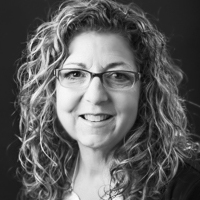Dr. George-Paschal: I am so excited to be doing this presentation. I attended the Texas Women's University to earn my master's and my bachelor's. And at the time, I had been practicing for 10 years in the area of adult rehabilitation. When I learned about occupational adaptation, it really just resonated with me and with my practice. I am excited to share it with all of you and to be able to impart that to future clients that you might use this with in your own practice. I will say that it is not an easy theory to learn at first. However, I do believe that it will help you to be client-centered and evidence-based as well.
What is Occupational Adaptation?
It is a theoretical approach that was generated by faculty at Texas Women's University. It was in response to the reductionistic practice of occupational therapy. If you read a lot of the literature, in the '90s, the late '80s and even some in the '70s, occupational therapy scholars are saying that occupational therapists are practicing in a reductionistic manner because we have accommodated to a medical model practice. This theory was written in response to that to help therapists re-engage with the occupational therapy constructs and the core values that we started with as a profession. It was the theory base for the PhD program at TWU. This is how I became aware of the theory is in my master's and my doctoral studies.
Occupational Adaptation (OA) combines both occupation and adaptation, which are often thought of as separate, into one construct, and it describes that as something that is happening within the person as they strive for occupational competency. OA is perceived as being the normal developmental process that leads us to competence in our occupational functioning. It is this process of over and over again trying to improve and be effective in our occupations. The process by which the benefits of occupational therapy occur is the occupational adaptation. It is using occupation to facilitate that internal adaptation so that the clients have increased relative mastery, increased generalization, and initiation of occupations that are important to them.
It is a perspective that promotes holistic practice. If you buy into these principles and the assumptions of the theory, it will help you look at your client within the bigger picture of their life, and help you emphasize the things that are most important to them, as opposed to getting caught up in what is measurable and the focus is of our facilities. Both are important, but having satisfied the clients, who can generalize what they are learning in our practice, is most important.
Why Occupational Adaptation?
The theory focuses on core concepts of the profession (Mulligan, White & Arthanat, 2014). The authors of this theory went back and looked at every imaginable article that was written about occupational therapy and have made sure that the theory is consistent with our core beliefs and values. Another reason for the OA model is that the current healthcare reformation has a potential negative influence on us as practitioners and on our healthcare settings (Orszag & Emanuel, 2010). Another is there is a need to promote client involvement in goal setting (Rosewilliam, Roskell, & Pandyan, 2011). This particular article, by Rosewilliam, et al., emphasised how clients who have had strokes are not involved in setting their own goals very frequently. Clients who have strokes are a large population that we work with in occupational therapy. Even beyond this reference, there is evidence, in the literature that across settings, we are not involving our clients in goal setting. Oftentimes I believe that our clients do not even know what their goals are that we have set for them.
Evidence to Support Use of OA
The evidence to support occupational adaptation this is a top-down approach. It prioritizes our clients' engagement and oftentimes return to meaningful occupations, and that is prioritized over our focus on human factors like sensorimotor, cognitive, and psychosocial. Research has supported the effectiveness of occupational therapy when we focus on the clients' unique interests, abilities and needs (Doig, Fleming, Cornwell, & Kuipers, 2009; Jack & Estes, 2010; Stelter & Whisner, 2007).
OA- First Section
For the first section about OA, we have specific learning objectives and the first one is that you will understand the assumptions of the theory. You will understand the normal process of occupational adaptation as reflected in the Occupational Adaptation Model, and we will go through that so that you will understand that. You will be able to state two to three key points about an assessment and about intervention based on occupational adaptation. You will be able to describe how you would use OA to assess a client and plan the intervention, and you will understand the unique feature of occupational adaptation in comparison with other occupation-based and client-centered approaches.
Overarching Assumptions
What is it that this theory believes? This theory believes that occupation provides a means by which we as humans adapt to the changes in our needs and our conditions and the desire to participate in occupation as our intrinsic motivating force. This is what keeps us going as productive, meaningful members of society and within our families. It is a normal process that we all go through. As soon as babies are born, they are striving to be functional in their environment. Older adults are continuing to want to be independent and function in their life as well.
